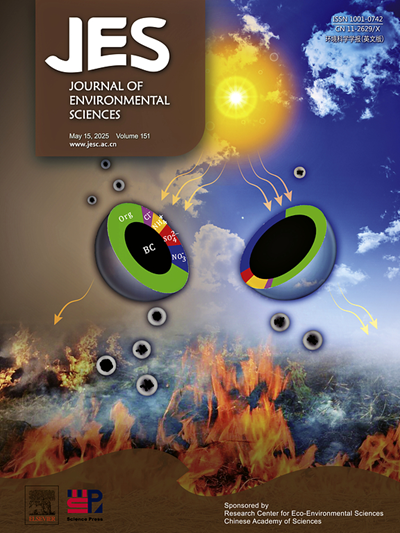Construction of an SnS-based heterostructure catalyst for electrochemical CO2 reduction to formate over a wide potential window
IF 5.9
2区 环境科学与生态学
Q1 ENVIRONMENTAL SCIENCES
引用次数: 0
Abstract
SnS has emerged as an attractive catalyst for the electrochemical CO2 reduction reaction (CO2RR) to formate, while its long-term operational stability is hindered by the self-reduction of Sn2+ and sulfur dissolution. Thus, maintaining high current efficiency across a wide negative potential range to achieve high production rates of formate remains a significant challenge. In this study, we present a heterostructure constructed with SnS and CuS for efficient CO2RR to formate. The SnS-CuS (30) exhibits a remarkable formate Faradaic efficiency (FEf) of 93.94 % at −1 V vs reversible hydrogen electrode (RHE) and demonstrates long-term stability for 7.5 h, maintaining high activity (with an average FEf of 85.6 %) across a wide negative potential range (− 0.8 V−1.2 V (vs. RHE)). The results reveal that the heterogeneous interface between SnS and CuS mitigates the self-reduction issue of SnS by sacrificing Cu²⁺, highlighting that the true active species is SnS, which effectively resists structural changes during the electrolysis process under the protection of CuS. The synergistic interaction within the CuS and SnS heterostructure, combined with the tendency for electron self-conduction, enables the catalyst to maintain high formate activity and selectivity across a wide potential range. Furthermore, theoretical results further indicate that the incorporation of CuS enhances CO2 adsorption and lowers the energy barrier for the formation of formate intermediates. This study inspires the concept of applying protective layers to active species, promoting high selectivity in Sn-based electrocatalysts.

在宽电位窗口内电化学还原CO2生成甲酸的基于sns的异质结构催化剂的构建
SnS是电化学CO2还原反应(CO2RR)形成的一种有吸引力的催化剂,但Sn2+的自还原和硫的溶解阻碍了其长期运行的稳定性。因此,在较宽的负电位范围内保持高电流效率以实现高甲酸产量仍然是一个重大挑战。在这项研究中,我们提出了一个由SnS和cu组成的异质结构,用于CO2RR的高效生成。与可逆氢电极(RHE)相比,sn - cu(30)在−1 V时表现出93.94%的甲酸法拉第效率(FEf),并表现出7.5 h的长期稳定性,在−0.8 V−1.2 V(相对于RHE)的宽负电位范围内保持高活性(平均FEf为85.6%)。结果表明,SnS和Cu之间的非均相界面通过牺牲Cu 2 +来缓解SnS的自还原问题,强调真正的活性物质是SnS,它在Cu的保护下有效抵抗了电解过程中的结构变化。cu和SnS异质结构之间的协同作用,加上电子自传导的趋势,使催化剂在很宽的电位范围内保持高甲酸活性和选择性。此外,理论结果进一步表明,cu的加入增强了CO2的吸附,降低了甲酸酯中间体形成的能垒。该研究启发了在活性物质上应用保护层的概念,提高了锡基电催化剂的高选择性。
本文章由计算机程序翻译,如有差异,请以英文原文为准。
求助全文
约1分钟内获得全文
求助全文
来源期刊

Journal of Environmental Sciences-china
环境科学-环境科学
CiteScore
13.70
自引率
0.00%
发文量
6354
审稿时长
2.6 months
期刊介绍:
The Journal of Environmental Sciences is an international journal started in 1989. The journal is devoted to publish original, peer-reviewed research papers on main aspects of environmental sciences, such as environmental chemistry, environmental biology, ecology, geosciences and environmental physics. Appropriate subjects include basic and applied research on atmospheric, terrestrial and aquatic environments, pollution control and abatement technology, conservation of natural resources, environmental health and toxicology. Announcements of international environmental science meetings and other recent information are also included.
 求助内容:
求助内容: 应助结果提醒方式:
应助结果提醒方式:


